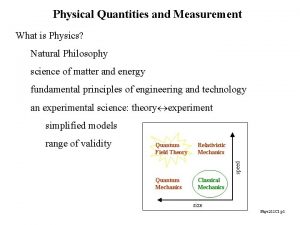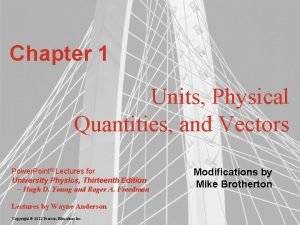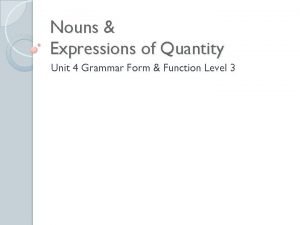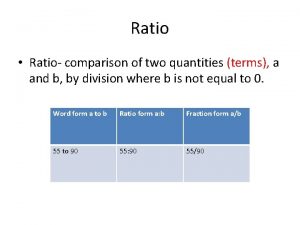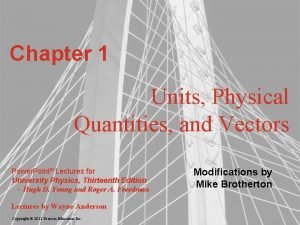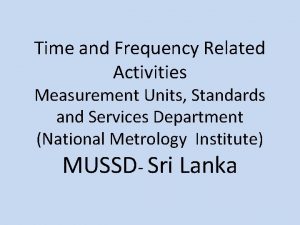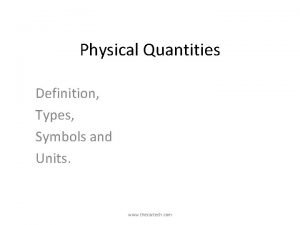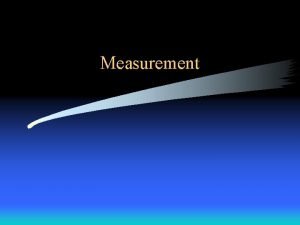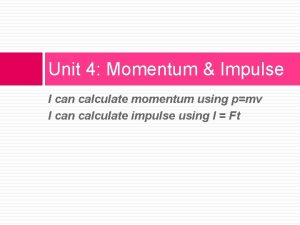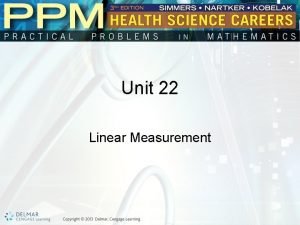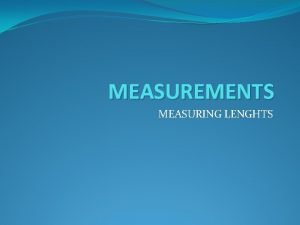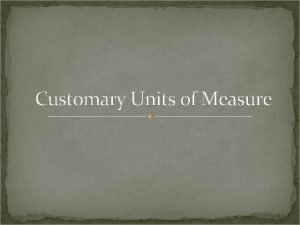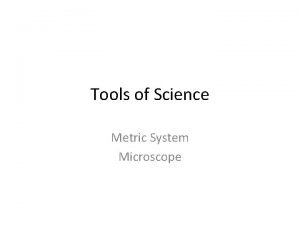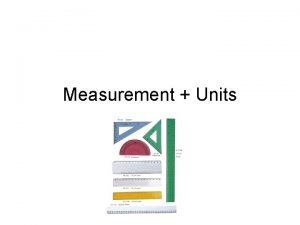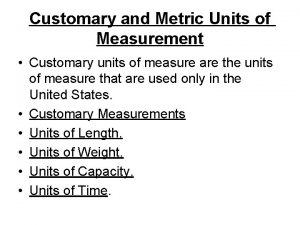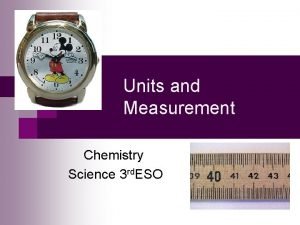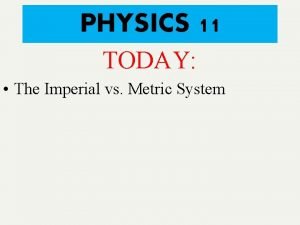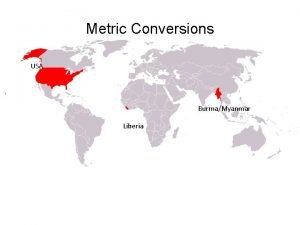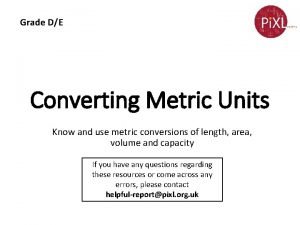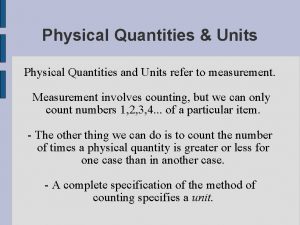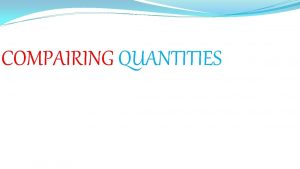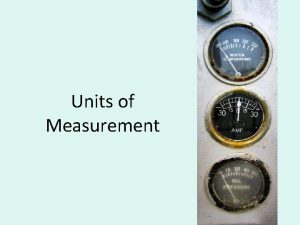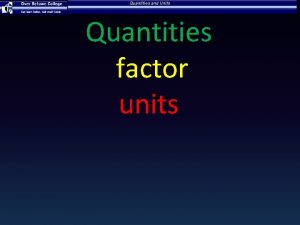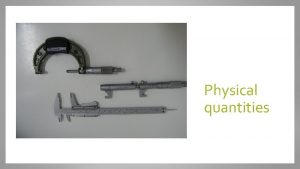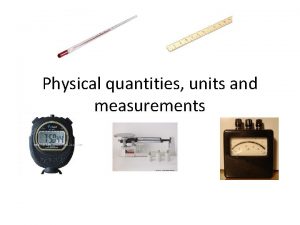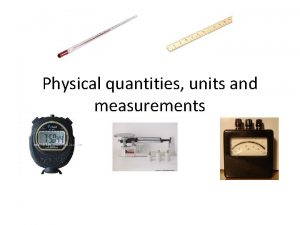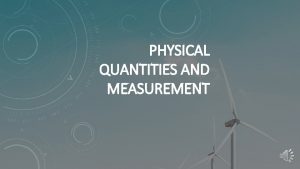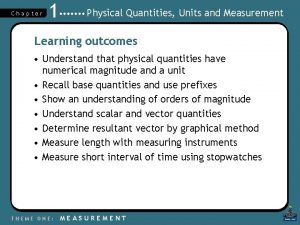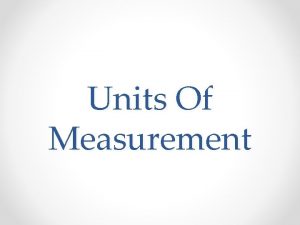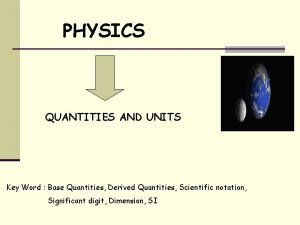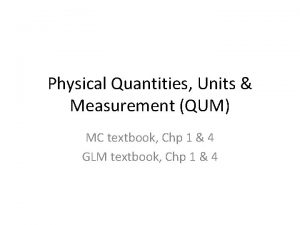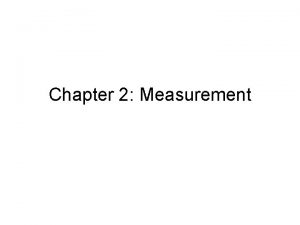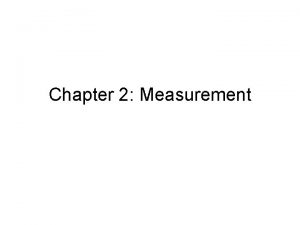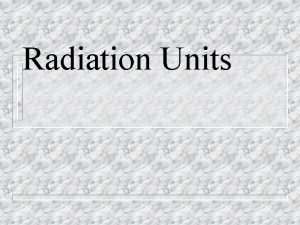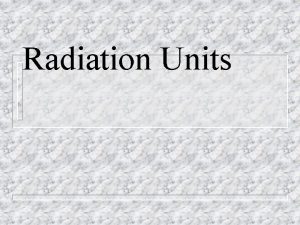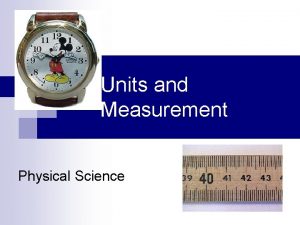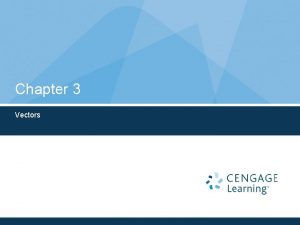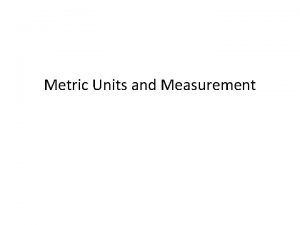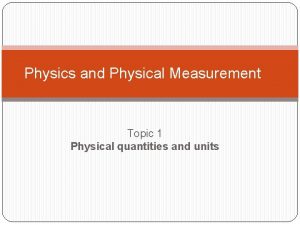Chapter 1 Physical Quantities Units and Measurement 1
























- Slides: 24

Chapter 1 Physical Quantities, Units and Measurement 1. 1 Physical Quantities • A physical quantity is one that can be measured and consists of a magnitude and unit. Measuring length 70 km/h SI units are common today THEME ONE: 4. 5 m Vehicles Not Exceeding 1500 kg In Unladen Weight MEASUREMENT

Chapter 1 Physical Quantities, Units and Measurement 1. 1 Physical Quantities Are classified into two types: • • Base quantities Derived quantities Base quantity is like the brick – the basic building block of a house THEME ONE: MEASUREMENT Derived quantity is like the house that was build up from a collection of bricks (basic quantity)

Chapter 1 Physical Quantities, Units and Measurement 1. 2 SI Units • SI Units – International System of Units Base Quantities Name of Unit Symbol of Unit length metre m mass kilogram kg time second s electric current ampere A temperature kelvin K amount of substance mol luminous intensity candela cd THEME ONE: MEASUREMENT

Chapter 1 Physical Quantities, Units and Measurement 1. A physical quantity is a quantity that can be measured and consists of a numerical magnitude and a unit. 2. The physical quantities can be classified into base quantities and derived quantities. 3. There are seven base quantities: length, mass, time, current, temperature, amount of substance and luminous intensity. 4. The SI units for length, mass and time are metre, kilogram and second respectively. THEME ONE: MEASUREMENT

Chapter 1 Physical Quantities, Units and Measurement 1. 4 Scalars and Vectors • Scalar quantities are quantities that have magnitude only. Two examples are shown below: Measuring Mass THEME ONE: MEASUREMENT Measuring Temperature

Chapter 1 Physical Quantities, Units and Measurement 1. 5 Measurement of Length and Time Accurate Measurement • No measurement is perfectly accurate • Some error is inevitable even with high precision instruments • Two main types of errors – Random errors – Systematic errors THEME ONE: MEASUREMENT

Chapter 1 Physical Quantities, Units and Measurement 1. 5 Measurement of Length and Time Accurate Measurement • Random errors occur in all measurements. • Arise when observers estimate the last figure of an instrument reading • Also contributed by background noise or mechanical vibrations in the laboratory. • Called random errors because they are unpredictable • Minimise such errors by averaging a large number of readings • Freak results discarded before averaging THEME ONE: MEASUREMENT

Chapter 1 Physical Quantities, Units and Measurement 1. 5 Measurement of Length and Time Accurate Measurement • Systematic errors are not random but constant • Cause an experimenter to consistently underestimate or overestimate a reading • They Due to the equipment being used – e. g. a ruler with zero error • may be due to environmental factors – e. g. weather conditions on a particular day • Cannot be reduced by averaging, but they can be eliminated if the sources of the errors are known THEME ONE: MEASUREMENT

Chapter 1 Physical Quantities, Units and Measurement 1. 5 Measurement of Length and Time Length • Measuring tape is used to measure relatively long lengths • For shorter length, a metre rule or a shorter rule will be more accurate THEME ONE: MEASUREMENT

Chapter 1 Physical Quantities, Units and Measurement 1. 5 Measurement of Length and Time • Correct way to read the scale on a ruler • Position eye perpendicularly at the mark on the scale to avoids parallax errors • Another reason for error: object not align or arranged parallel to the scale THEME ONE: MEASUREMENT

Chapter 1 Physical Quantities, Units and Measurement 1. 5 Measurement of Length and Time • Many instruments do not read exactly zero when nothing is being measured • Happen because they are out of adjustment or some minor fault in the instrument • Add or subtract the zero error from the reading shown on the scale to obtain accurate readings • Vernier calipers or micrometer screw gauge give more accurate measurements THEME ONE: MEASUREMENT

Chapter 1 Physical Quantities, Units and Measurement 1. 5 Measurement of Length and Time Vernier Calipers • Allows measurements up to 0. 01 cm • Consists of a 9 mm long scale divided into 10 divisions THEME ONE: MEASUREMENT

Chapter 1 Physical Quantities, Units and Measurement 1. 5 Measurement of Length and Time Vernier Calipers • The object being measured is between 2. 4 cm and 2. 5 cm long. • The second decimal number is the marking on the vernier scale which coincides with a marking on the main scale. THEME ONE: MEASUREMENT

Chapter 1 Physical Quantities, Units and Measurement 1. 5 Measurement of Length and Time • Here the eighth marking on the vernier scale coincides with the marking at C on the main scale • Therefore the distance AB is 0. 08 cm, i. e. the length of the object is 2. 48 cm THEME ONE: MEASUREMENT

Chapter 1 Physical Quantities, Units and Measurement 1. 5 Measurement of Length and Time • The reading shown is 3. 15 cm. • The instrument also has inside jaws for measuring internal diameters of tubes and containers. • The rod at the end is used to measure depth of containers. THEME ONE: MEASUREMENT

Chapter 1 Physical Quantities, Units and Measurement 1. 5 Measurement of Length and Time Micrometer Screw Gauge • To measure diameter of fine wires, thickness of paper and small lengths, a micrometer screw gauge is used • The micrometer has two scales: • Main scale on the sleeve • Circular scale on the thimble • There are 50 divisions on the thimble • One complete turn of the thimble moves the spindle by 0. 50 mm THEME ONE: MEASUREMENT

Chapter 1 Physical Quantities, Units and Measurement 1. 5 Measurement of Length and Time Micrometer Screw Gauge • Two scales: main scale and circular scale • One complete turn moves the spindle by 0. 50 mm. • Each division on the circular scale = 0. 01 mm THEME ONE: MEASUREMENT

Chapter 1 Physical Quantities, Units and Measurement 1. 5 Measurement of Length and Time Precautions when using a micrometer 1. Never tighten thimble too much – Modern micrometers have a ratchet to avoid this 2. Clean the ends of the anvil and spindle before making a measurement – Any dirt on either of surfaces could affect the reading 3. Check for zero error by closing the micrometer when there is nothing between the anvil and spindle – The reading should be zero, but it is common to find a small zero error –Correct zero error by adjusting the final measurement THEME ONE: MEASUREMENT

Chapter 1 Physical Quantities, Units and Measurement 1. 5 Measurement of Length and Time • Measured in years, months, days, hours, minutes and seconds • SI unit for time is the second (s). • Clocks use a process which depends on a regularly repeating motion termed oscillations. THEME ONE: MEASUREMENT

Chapter 1 Physical Quantities, Units and Measurement 1. 5 Measurement of Length and Time Caesium atomic clock • 1999 - NIST-F 1 begins operation with an uncertainty of 1. 7 × 10− 15, or accuracy to about one second in 20 million years THEME ONE: MEASUREMENT

Chapter 1 Physical Quantities, Units and Measurement 1. 5 Measurement of Length and Time • The oscillation of a simple pendulum is an example of a regularly repeating motion. • The time for 1 complete oscillation is referred to as the period of the oscillation. THEME ONE: MEASUREMENT

Chapter 1 Physical Quantities, Units and Measurement 1. 5 Measurement of Length and Time Pendulum Clock • Measures long intervals of time • Hours, minutes and seconds • Mass at the end of the chain attached to the clock is allowed to fall • Gravitational potential energy from descending mass is used to keep the pendulum swinging • In clocks that are wound up, this energy is stored in coiled springs as elastic potential energy. THEME ONE: MEASUREMENT

Chapter 1 Physical Quantities, Units and Measurement 1. 5 Measurement of Length and Time Watch • also used to measure long intervals of time • most depend on the vibration of quartz crystals to keep accurate time • energy from a battery keeps quartz crystals vibrating • some watches also make use of coiled springs to supply the needed energy THEME ONE: MEASUREMENT

Chapter 1 Physical Quantities, Units and Measurement 1. 5 Measurement of Length and Time Stopwatch • Measure short intervals of time • Two types: digital stopwatch, analogue stopwatch • Digital stopwatch more accurate as it can measure time in intervals of 0. 01 seconds. • Analogue stopwatch measures time in intervals of 0. 1 seconds. THEME ONE: MEASUREMENT
 Measured quantity
Measured quantity Physical quantities and measurement class 6 worksheet
Physical quantities and measurement class 6 worksheet Units, physical quantities and vectors
Units, physical quantities and vectors Angular acceleration and linear acceleration
Angular acceleration and linear acceleration Expressions of quantity
Expressions of quantity A ratio comparing two different quantities
A ratio comparing two different quantities Physical quantities and vectors
Physical quantities and vectors Measurement units standards and services department
Measurement units standards and services department Weight si unit and symbol
Weight si unit and symbol Measurable characteristics that describe an object
Measurable characteristics that describe an object Mr. gallon
Mr. gallon Momentum measurement unit
Momentum measurement unit Units of linear measurement
Units of linear measurement Lesson 5 convert customary units of weight
Lesson 5 convert customary units of weight Typical room height appropriate metric unit
Typical room height appropriate metric unit Us customary units of measurement
Us customary units of measurement Deci centi mili
Deci centi mili Opisometer is used to measure
Opisometer is used to measure Customary units of measurement
Customary units of measurement Measurement units chart
Measurement units chart Unit metric
Unit metric Imperial unit candela
Imperial unit candela Liberia metric system
Liberia metric system Units of length
Units of length Botox dosage forehead
Botox dosage forehead

